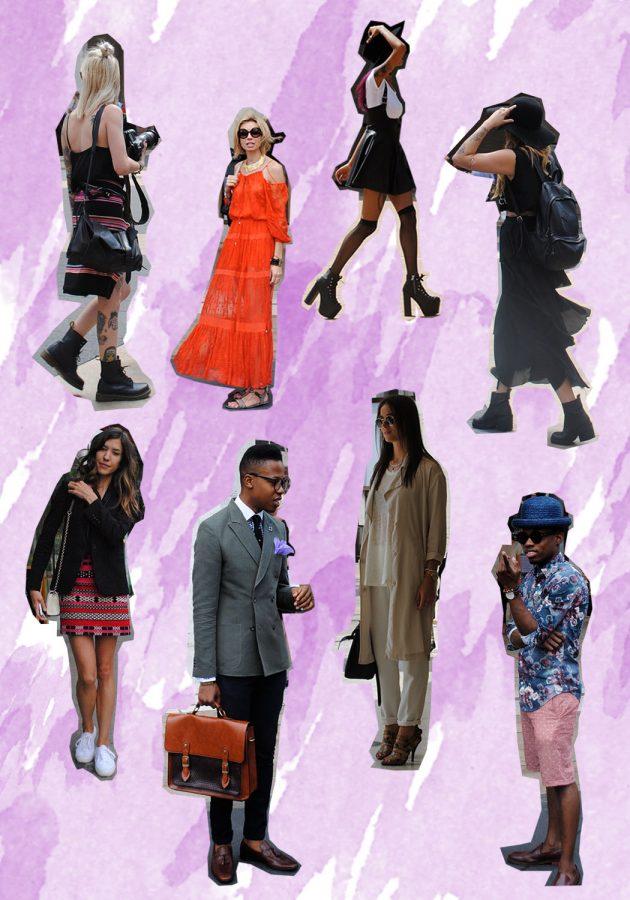Street Style: A Saturated Market
September 6, 2016
No matter where fashion week takes place — Lincoln Center, Skylight Clarkson Square, Carrousel du Louvre or Museo del Novecento — everyone knows that even if you can’t make it inside to the show, you stay outside and dress as if you’re supposed to be sitting front row. However, the pinnacle of street style was not always outside the doors, but out and about on the street as it’s named to be.
Bill Cunningham stumbled into the street style scene in the early 1950s by photographing the looks that grabbed his attention rather than looking out for socialites. His fame skyrocketed and he became a talented icon who was often spotted on his bike, wearing a French worker’s jacket, camera in hand. “I knew from photographing people on the streets that the news was not in the showrooms. It was on the streets,” Cunningham wrote in the Times. The Times’ Metro Desk published a spread of his photos in December 1978, spurring the public’s consumption of street style media.
Musicians, clubgoers and designers alike in the 1970s and ‘80s shaped fashion much the way they continue to do so today. Consumers caught wind of staples like Diane von Furstenberg’s wrap dress, hot pants donned by partiers and Elton John’s tinted sunglasses for all times of day. High fashion went from untouchable to attainable all thanks to exposure.
Since those days, bloggers like the Street Pepper and the Sartorialist have made a living from photographing icons who are on the rise or are already famous. Fashion Weeks all over the globe lend themselves to more than just showcasing haute couture
However, there is also the viewpoint that the masses of dressed up fashionmongers may be no more than poseurs. It’s not at all uncommon to see people lingering outside fashion shows for a few hours, walking around alone or with a posse, sunglasses precariously perched as they try to appear casually busy. Conrad Bischoff, a CAS junior who is both a model and photographer, has experienced this firsthand.
“At this point, going to shows I see more photographers than people and some photographers are also bloggers so they’re dressing up to get their photo taken as well, which is weird if you think about someone like Bill Cunningham who was really just an observer,” he said.
Arguably, those who attend shows are going to dress to impress — you never know who you’ll be brushing shoulders with. Despite this, the culture of street style has blended the worlds of professional photographers and small-time bloggers. Jackson Tisi, a Tisch junior studying film and TV, has seen this when he shoots photos and videos for both clients and his own enjoyment.
“I think that because of social media and accessibility, it’s difficult to break out and make your content unique. A lot more people have the opportunity to photograph street style because of high quality iPhone cameras and cheaper DSLR options, so it comes down to your following and marketability.”
Like many other fields (journalism, for one), social media has changed the landscape of an industry once dominated by photographers who gained exposure through popular publications. However, anyone can start a Blogspot, snap a few shots outside a fashion show and share their thoughts. The purpose of street style photography is to weave the fabrics of couture and the average person’s daily looks together — so where do we draw the line between the professionals and the amateurs?
A version of this article appeared in the Tuesday Sept. 6 print edition. Email Grace Halio at [email protected].




























































































































































